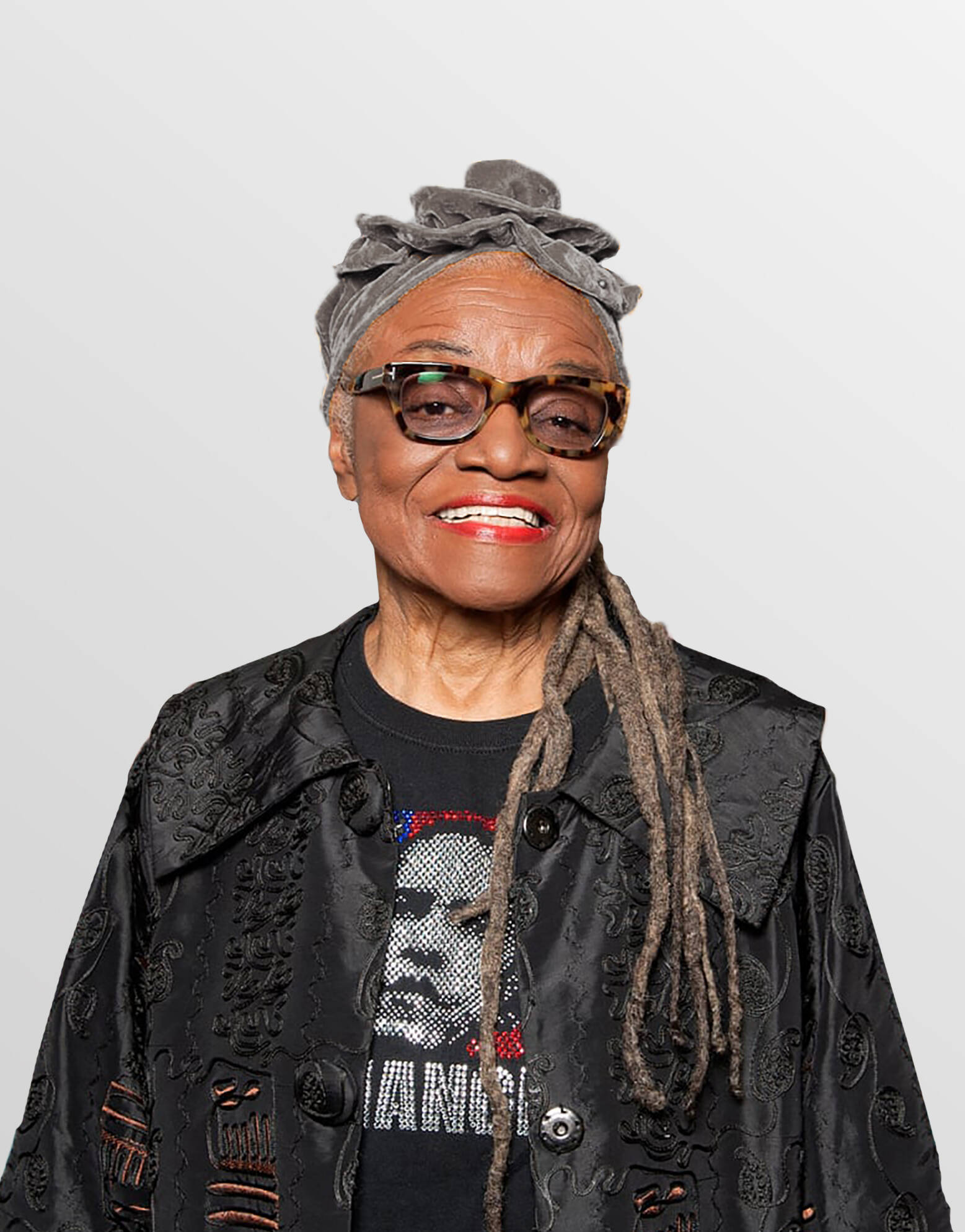
Faith Ringgold 1930 - 2024
We remember the artist who has died aged 93
In 1967, the artist Faith Ringgold, painted Die, a six-by-twelve-feet diptych based on Picasso’s Guernica that depicts a race riot, an event that had become all too commonplace in what has since been called the 'Long Hot Summer of 1967.
The scene is heart wrenching, and it’s hard to imagine a more powerful representation of that moment of national reckoning. At the time it was exhibited, though, the painting was dismissed and soon forgotten. The artist, author, and songwriter Romare Bearden criticized its style as "monotonous" and, in a letter to Ringgold, expressed surprise that a woman of such “petite build” could have painted it. The work languished in obscurity for decades.
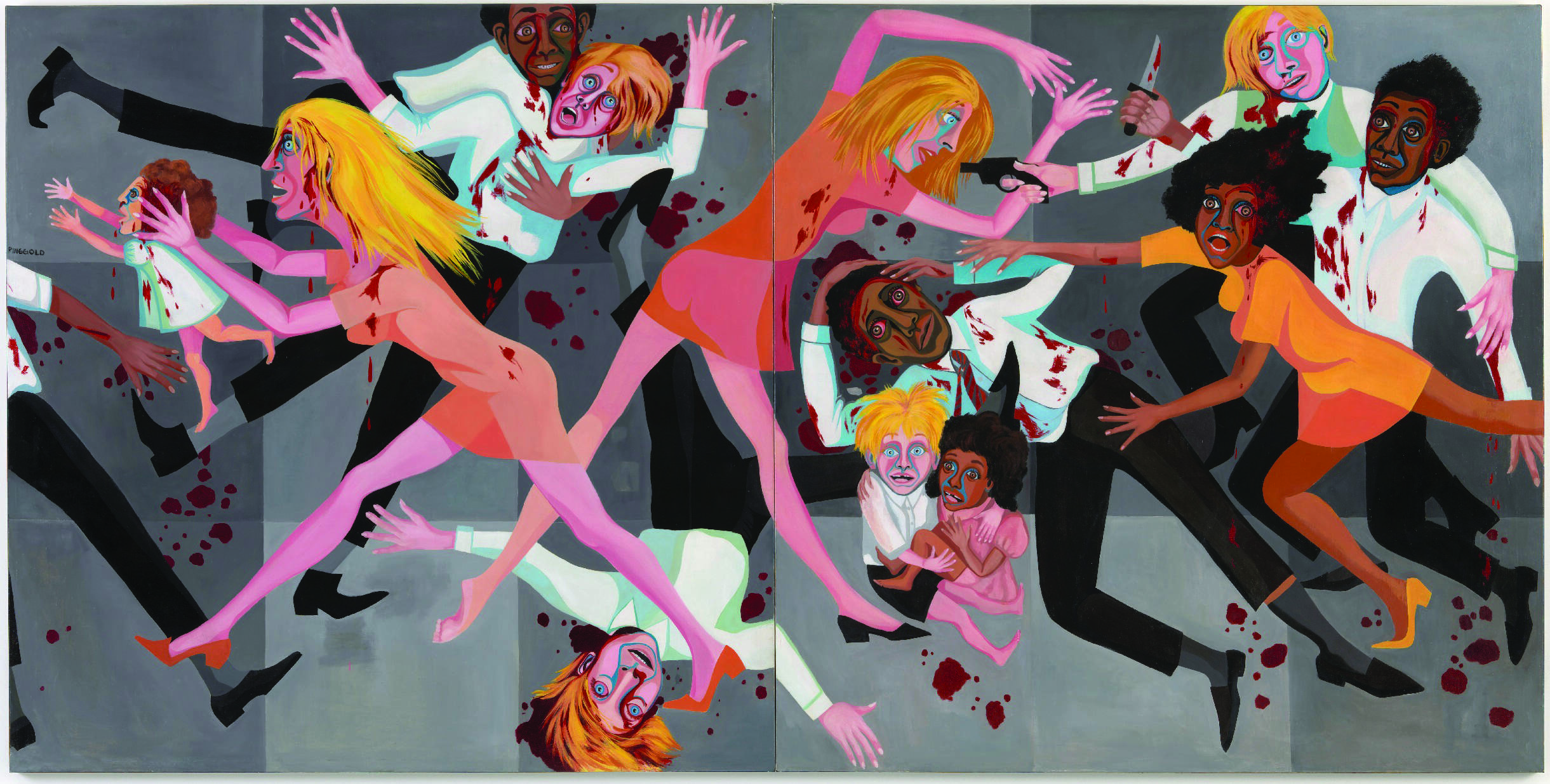 Faith Ringgold, American People Series #20: Die, 1967. Oil on canvas, two panels, 72 x 144 in (182.9 x 365.8 cm). The Museum of Modern Art, New York, Purchase; and gift of The Modern Women's Fund. © Faith Ringgold / ARS, NY and DACS, London, courtesy ACA Galleries, New York 2021. Digital Image © The Museum of Modern Art/Licensed by SCALA / Art Resource, NY
Faith Ringgold, American People Series #20: Die, 1967. Oil on canvas, two panels, 72 x 144 in (182.9 x 365.8 cm). The Museum of Modern Art, New York, Purchase; and gift of The Modern Women's Fund. © Faith Ringgold / ARS, NY and DACS, London, courtesy ACA Galleries, New York 2021. Digital Image © The Museum of Modern Art/Licensed by SCALA / Art Resource, NY
That was until 2019, when the Museum of Modern Art in New York reopened after a massive, multimillion-dollar renovation. One of the most famous images of the re-hang of its collection was a gallery anchored by two paintings: Picasso’s Demoiselles d’Avignon and Ringgold’s Die, which had been acquired three years earlier.
The pairing generated fierce debate, with art-world figures from Kerry James Marshall to Helen Molesworth offering opinions. Die was featured on the cover of Artforum the following January, a publication that had devoted hardly a word to the artist until then. Fifty years later, Ringgold was finally being recognized for the visionary artist she was.
Ringgold died at the age of 93 in her home in Englewood, New Jersey at the weekend. Her passing was announced by ACA Galleries, the artist’s representatives since 1995.
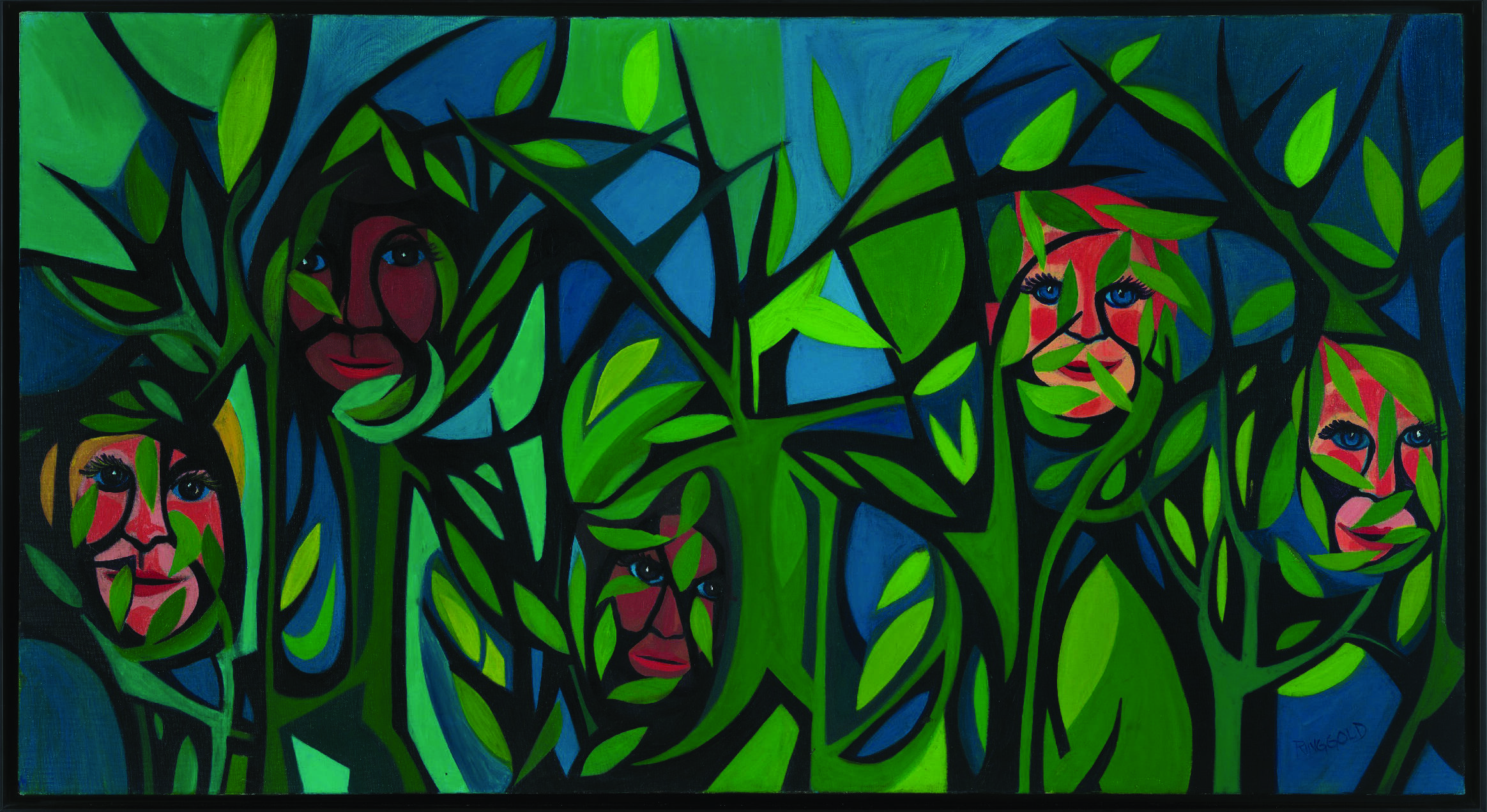 Faith Ringgold, American People Series #15: Hide Little Children, 1966. Oil on canvas, 26 x 48 in (66 x 121.9 cm). Private collection. © Faith Ringgold / ARS, NY and DACS, London, courtesy ACA Galleries, New York 2021. Photo: Todd-White Art Photography, London; courtesy Pippy Houldsworth Gallery, London
Faith Ringgold, American People Series #15: Hide Little Children, 1966. Oil on canvas, 26 x 48 in (66 x 121.9 cm). Private collection. © Faith Ringgold / ARS, NY and DACS, London, courtesy ACA Galleries, New York 2021. Photo: Todd-White Art Photography, London; courtesy Pippy Houldsworth Gallery, London
The artist, who had shows planned in Switzerland and France at the time of her death, had been at the forefront of art activism her entire career. In the 1960s and 70s, she led countless demonstrations on the stairs of the Met, the Whitney, and MoMA to demand they diversify their collections and exhibitions to include more women and people of color.
She designed posters for the Black Panther Party and for the release of activist Angela Davis. She participated in unapologetically political exhibitions that confronted the art world’s inaction regarding the Vietnam War and the civil rights movement.
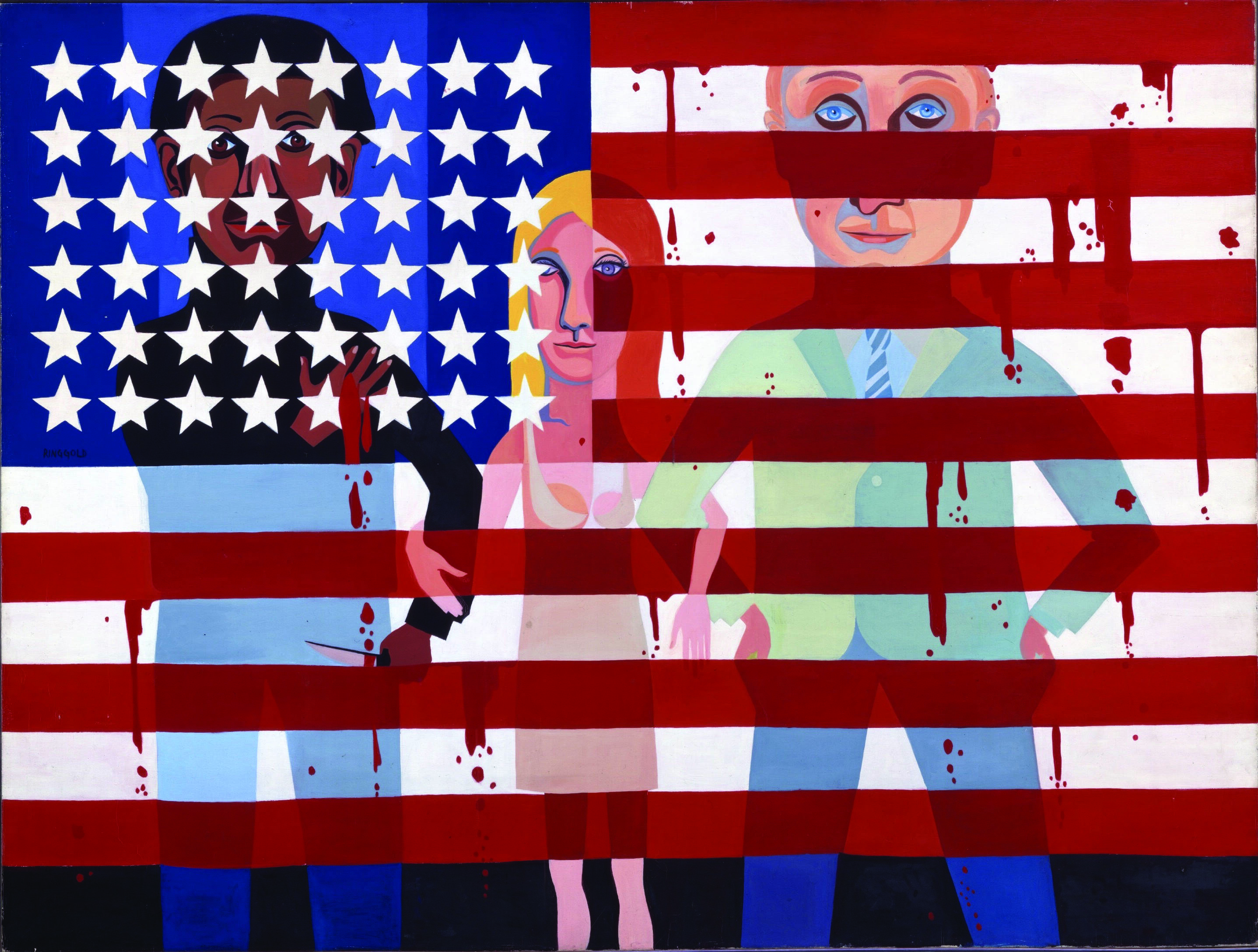 Faith Ringgold, American People Series #18: The Flag Is Bleeding, 1967. Oil on canvas, 72 x 96 in (182.9 x 243.8 cm). Courtesy the artist and ACA Galleries, New York. © Faith Ringgold / ARS, NY and DACS, London, courtesy ACA Galleries, New York 2021
Faith Ringgold, American People Series #18: The Flag Is Bleeding, 1967. Oil on canvas, 72 x 96 in (182.9 x 243.8 cm). Courtesy the artist and ACA Galleries, New York. © Faith Ringgold / ARS, NY and DACS, London, courtesy ACA Galleries, New York 2021
She was born in Harlem, the youngest of three children, to a working class family. A sufferer of chronic asthma, Ringgold explored art through the support of her clothes designer mother, often experimenting with crayons and paint as a youngster. She also learned how to sew creatively with fabric provided by her mother, and her future artwork was greatly inspired by the people, poetry, and music she experienced in her childhood - Duke Ellington and Langston Hughes lived nearby and Sonny Rollins was a childhood friend.
Despite the creativity of her inner circle, Ringgold was no stranger to being told no, and subsequently always paved her own way. After years of trying to get her writing published, she took matters into her own hands and transcribed her stories onto her own artworks. 1983’s Who’s Afraid of Aunt Jemima? was the first of Ringgold’s story quilts, a genre she invented that merges African-American quilting traditions, Congolese BaKuba designs, and Tibetan thangka paintings to tell sometimes fictional, sometimes autobiographical stories written by hand on strips of cloth that she incorporates into the final compositions.
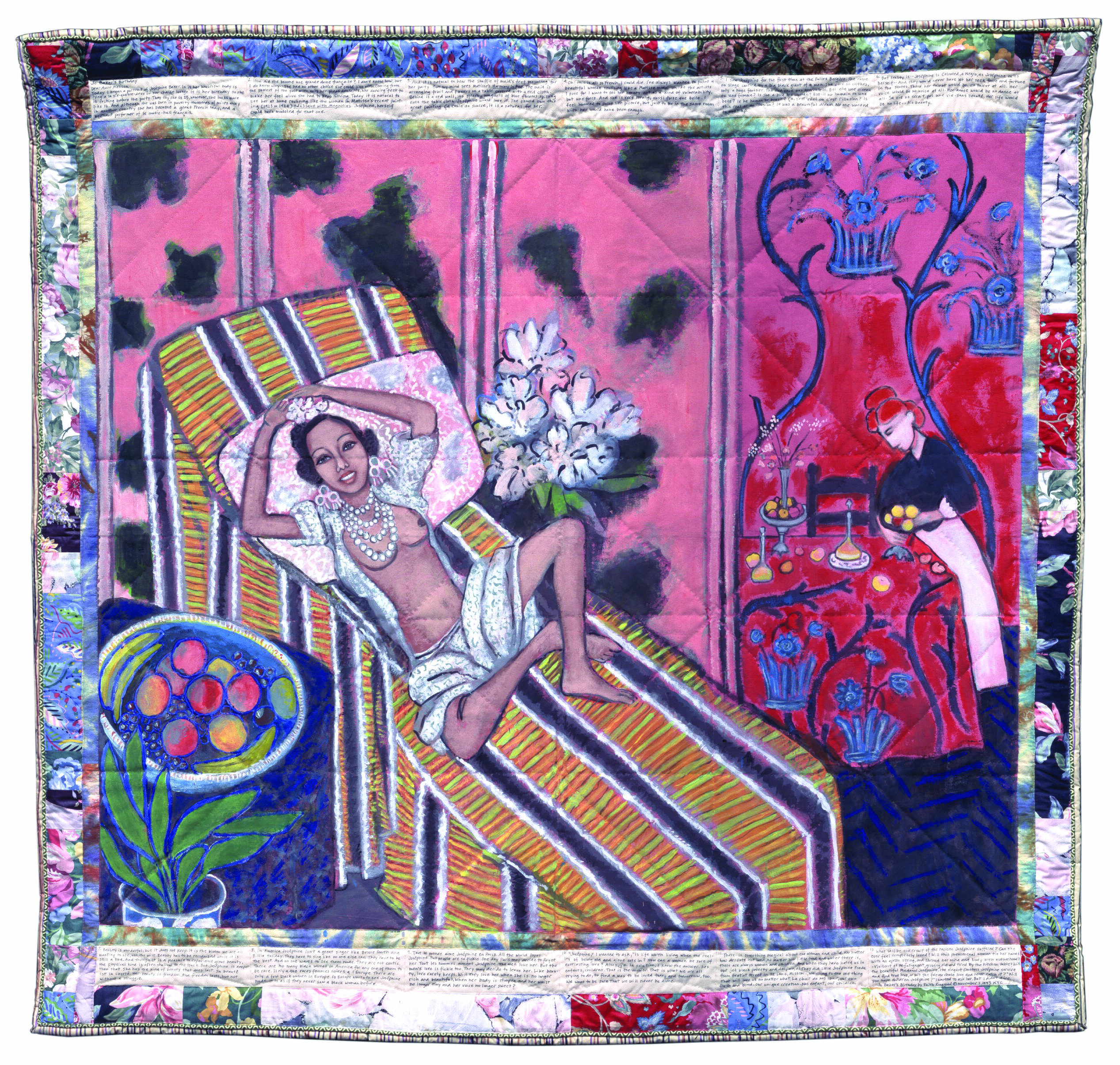 Faith Ringgold, Jo Baker’s Bananas: The American Collection #4, 1997. Acrylic on canvas with painted and pieced fabric 80 ½ × 76 in (204.5 × 193 cm). National Museum of Women in the Arts, Washington, DC, Purchased with funds donated by the Estate of Barbara Bingham Moore, Olga V. Hargis Family Trusts, and the Members’ Acquisition Fund. © Faith Ringgold / ARS, NY and DACS, London, courtesy ACA Galleries, New York 2021
Faith Ringgold, Jo Baker’s Bananas: The American Collection #4, 1997. Acrylic on canvas with painted and pieced fabric 80 ½ × 76 in (204.5 × 193 cm). National Museum of Women in the Arts, Washington, DC, Purchased with funds donated by the Estate of Barbara Bingham Moore, Olga V. Hargis Family Trusts, and the Members’ Acquisition Fund. © Faith Ringgold / ARS, NY and DACS, London, courtesy ACA Galleries, New York 2021
These quilts are some of the most widely celebrated artworks of the late twentieth century, including her famous French and American Collections, reproduced in full for the first time in the Phaidon book American People published in conjunction with The New Museum; and her quilt Tar Beach, which was adapted into a best-selling children’s book and spawned her parallel career as a children’s book author.
Ringgold was a trailblazer and a renegade, and a beloved figure who laid the foundations for more than one generation of politically minded artists. Her work as both artist and activist remained prescient and has never rung truer than it does upon her death. RIP Faith.
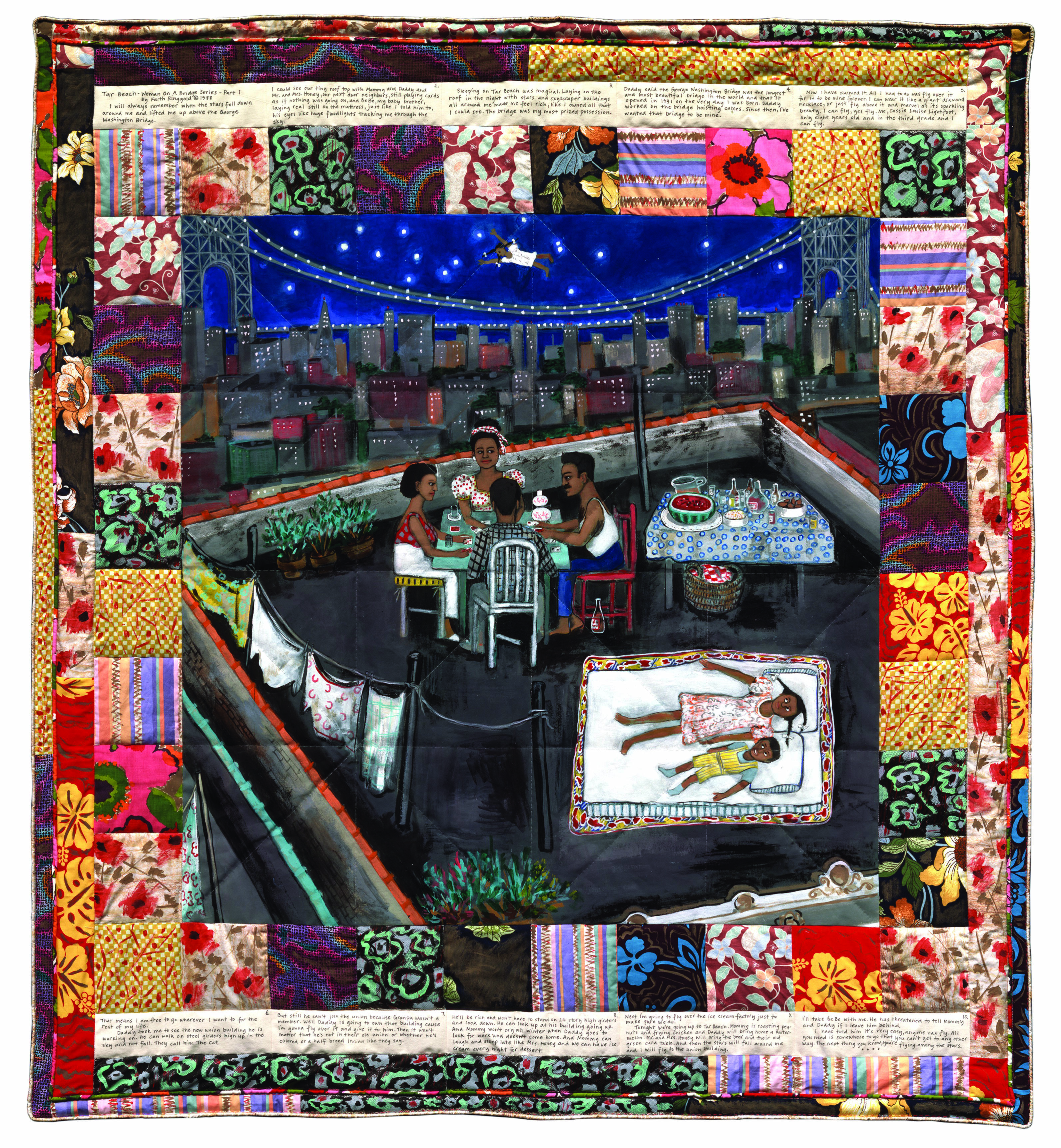 Faith Ringgold, Woman on a Bridge #1 of 5: Tar Beach, 1988. Acrylic on canvas with printed fabric, ink, and thread, 74 5/8 x 68 ½ in (189.5 x 174 cm). Solomon R. Guggenheim Museum, New York; Gift Mr. and Mrs. Gus and Judith Leiber, 1988. © Faith Ringgold / ARS, NY and DACS, London, courtesy ACA Galleries, New York 2021
Faith Ringgold, Woman on a Bridge #1 of 5: Tar Beach, 1988. Acrylic on canvas with printed fabric, ink, and thread, 74 5/8 x 68 ½ in (189.5 x 174 cm). Solomon R. Guggenheim Museum, New York; Gift Mr. and Mrs. Gus and Judith Leiber, 1988. © Faith Ringgold / ARS, NY and DACS, London, courtesy ACA Galleries, New York 2021